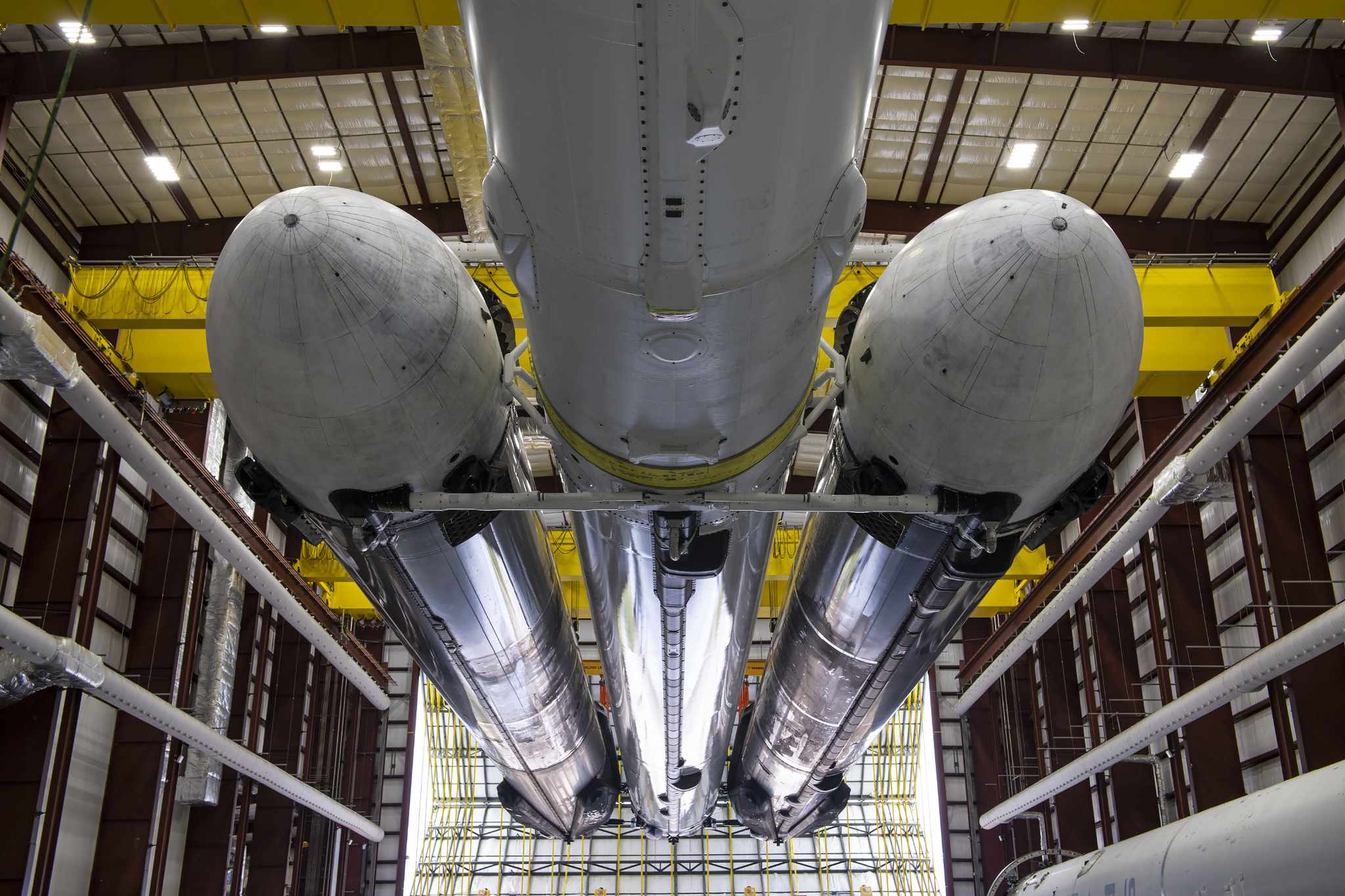
SpaceX has stood down from the second of this week’s pair of Starlink missions as priority shifts to Thursday’s scheduled 10:16 a.m. EDT liftoff of NASA’s Psyche spacecraft atop a triple-barreled Falcon Heavy booster from historic Pad 39A at Florida’s Kennedy Space Center (KSC) to explore the metal-rich asteroid of the same name. After successfully flying 21 Starlinks from Vandenberg Space Force Base, Calif., in the opening minutes of Monday morning, a mission out of Cape Canaveral Space Force Station on Sunday night was called off due to high winds at altitude, initially postponed to Monday night, before being scrubbed indefinitely until after Psyche is underway.
“Teams are evaluating the next available opportunity for this @Starlink launch,” SpaceX tweeted late Monday. “The upcoming @NASA Psyche launch on Falcon Heavy has priority this week.”
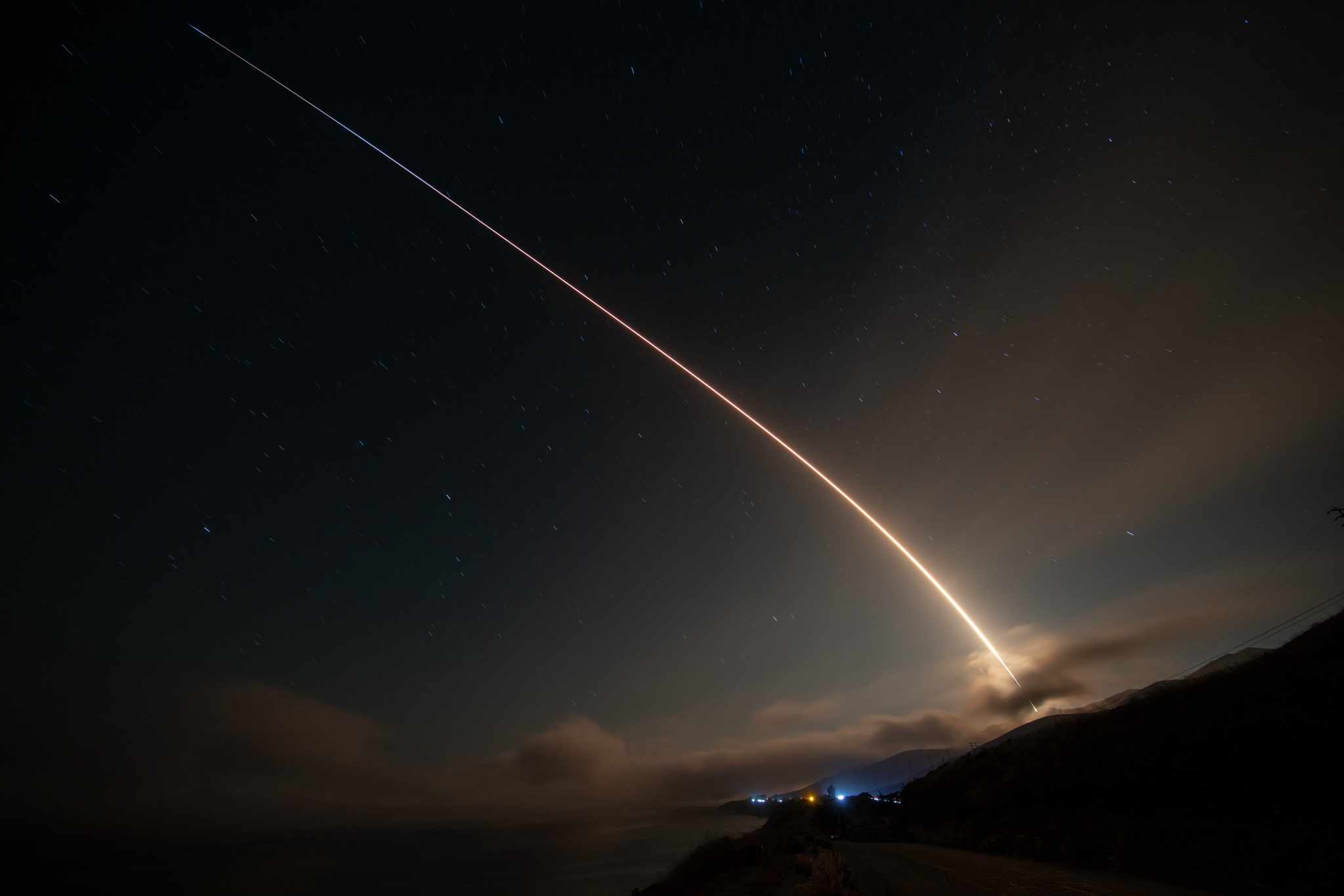
This unfolding game of rocket musical chairs began late last weekend, with plans for a pair of 13-times-used Falcon 9 boosters—B1067 from the Cape and B1063 from Vandenberg—to fly within 6.5 hours of each other, the former at 9:06 p.m. EDT Sunday from the East Coast, the second at 12:23 a.m. PDT Monday from the West Coast. But despite an 80-percent probability that Florida’s weather would play ball (and multiple T-0 opportunities over several hours), SpaceX shifted its launch time for B1067 initially to 9:18 p.m. EDT, then called off the attempt altogether.
“Standing down from tonight’s Falcon 9 launch attempt, due to upper-level winds,” the Hawthorne, Calif.-headquartered organization tweeted. “Teams are assessing the next available opportunity.”
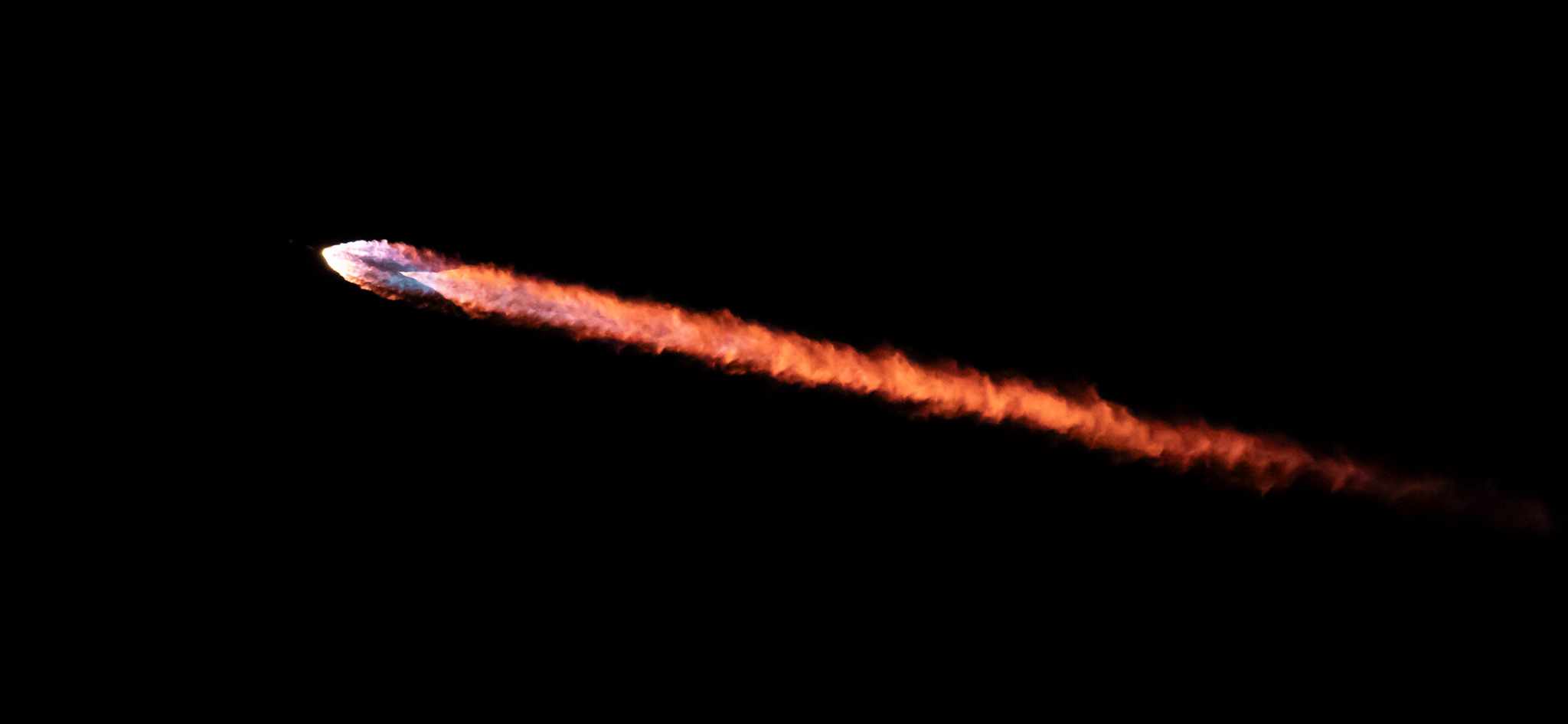
The Vandenberg mission, however, met with greater fortune, as B1063 rose on time from Space Launch Complex (SLC)-4E at 12:23 a.m. PDT for the 21st Falcon 9 flight of the West Coast so far in 2023 and the first for October. That record-breaking set of flights has been achieved using only four boosters, two of which—including B1063—have now logged six missions apiece since January.
Sixteen Vandenberg flights lifted 612 flat-packed Starlink internet communications satellites uphill, with another pair in April and June ferrying multi-payload Transporter stacks for commercial, government, educational and international customers. Two batches of Tranche 0 Transport and Tracking Layer (TTL) satellites for the Space Development Agency (SDA) followed in April and September, together with the first dedicated Iridium NEXT mission in over four years.
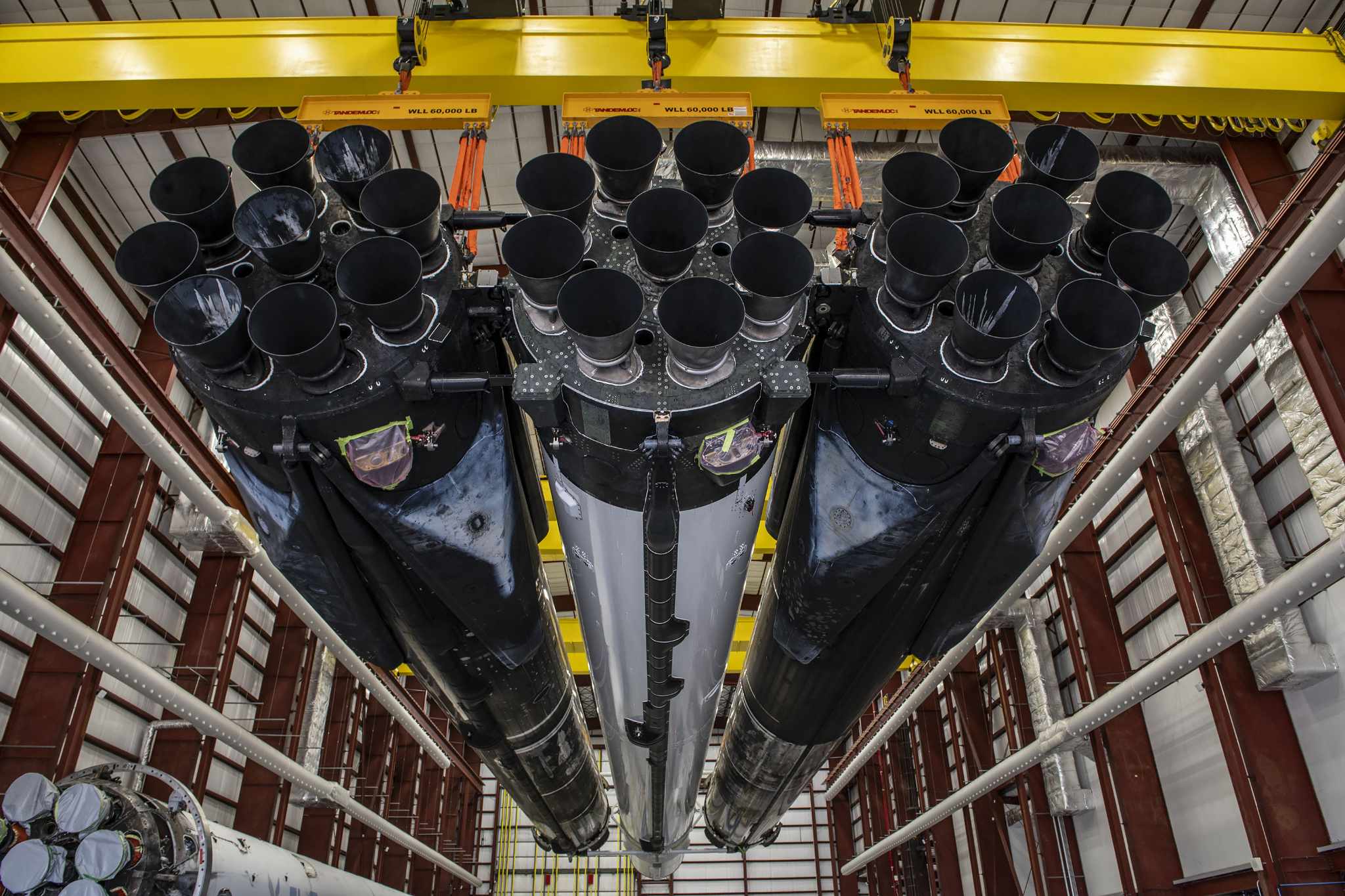
With B1063’s successful launch and landing on the West Coast-based Autonomous Spaceport Drone Ship (ASDS), “Of Course I Still Love You”, attention returned to the Cape’s storied Space Launch Complex (SLC)-40 where B1067 sat ready to become the seventh Falcon 9 core to log a 14th flight the following evening. But despite the presence of six T-0 points overnight—the first at 8:42 p.m. EDT Monday, the last at 12:10 a.m. EDT Tuesday—SpaceX teams elected to stand down in favor of NASA’s high-priority Psyche mission, which will visit and explore the 140-mile-wide (220-kilometer) metal-rich asteroid of the same name.
Psyche, named in honor of the eponymous Greek goddess of the soul (from which the term “psyche” originates), is the largest and most massive of the Solar System’s metal-rich asteroids and constitutes about one percent of the entire mass of the Mars-Jupiter asteroid belt. Long hypothesized to be the exposed core of a protoplanet (a theory now largely ruled out), Psyche is known to possess a pair of large craters, some 56 miles (90 kilometers) wide, as well as impact features close to its south pole.
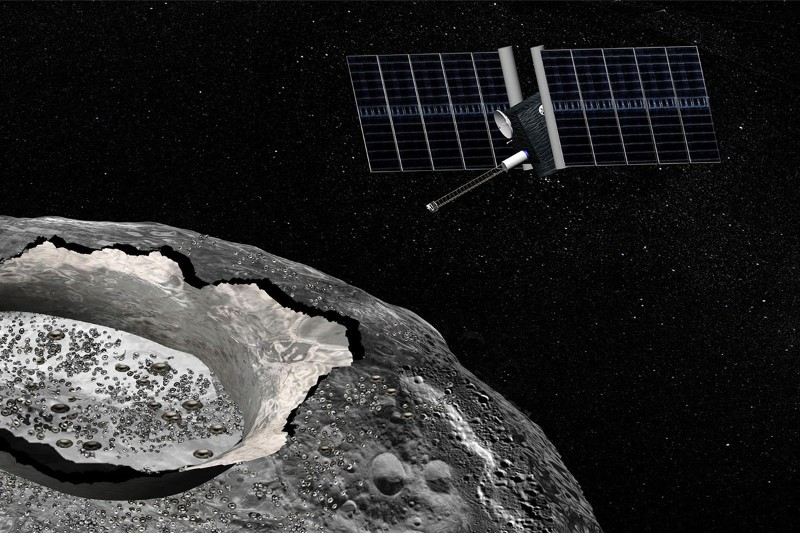
SpaceX’s mammoth Falcon Heavy, with its 5.1 million pounds (2.3 million kilograms) of liftoff thrust and capacity to deliver payloads up to 37,000 pounds (16,700 kilograms) beyond Earth orbit, was selected in February 2020 to launch the robotic Psyche to the asteroid Psyche. Launch services contracts worth $117 million envisaged a launch in the July-October 2022 timeframe, although an issue with Psyche flight software testing last summer forced a delay until the next available set of launch opportunities in October 2023.
Initially targeting the opening of the three-week October “window”, with a launch on the 5th, NASA and SpaceX teams last month opted to aim instead for 10:16 a.m. EDT on the 12th. The date change enabled NASA teams to complete verifications of parameters used to control Psyche’s nitrogen cold-gas thrusters, which are required to point the spacecraft in support of science, power, thermal and other demands, including orientation and momentum management.
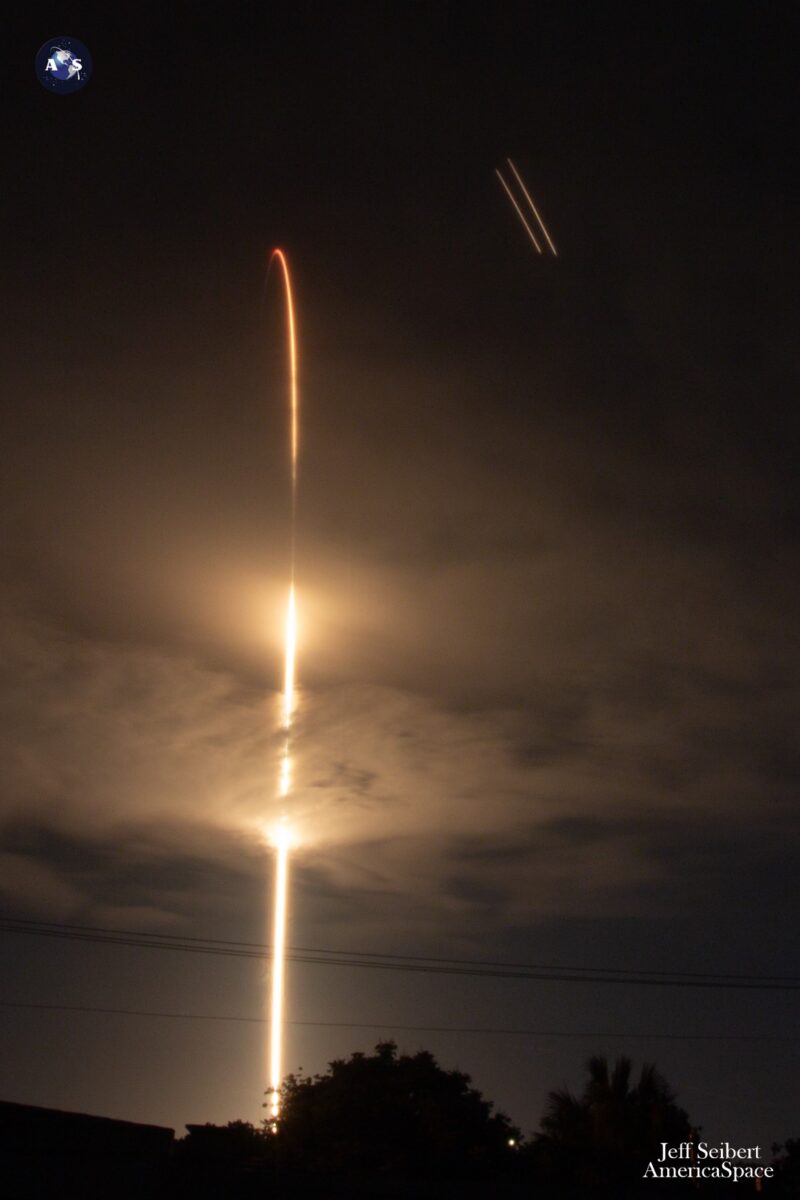
A Flight Readiness Review (FRR) was concluded without incident on 28 September and the following day SpaceX rolled the Falcon Heavy out to Pad 39A for a Static Fire Test of its 27 Merlin 1D+ engines. For this mission—the fourth Heavy of 2023, following previous flights in January, April and July—the rocket includes a brand-new center core (B1079) and a pair of previously-flown side-boosters (B1064 and B1065).
The latter are both making their fourth flights, having served in the same capacity as Falcon Heavy side-boosters on past missions in November 2022 and January and July of this year. Both will return to synchronized touchdowns on solid ground at the Cape’s Landing Zones (LZ)-1 and 2, whilst the high-energy lifting requirements of Psyche demand that B1079 will be expended on this flight.
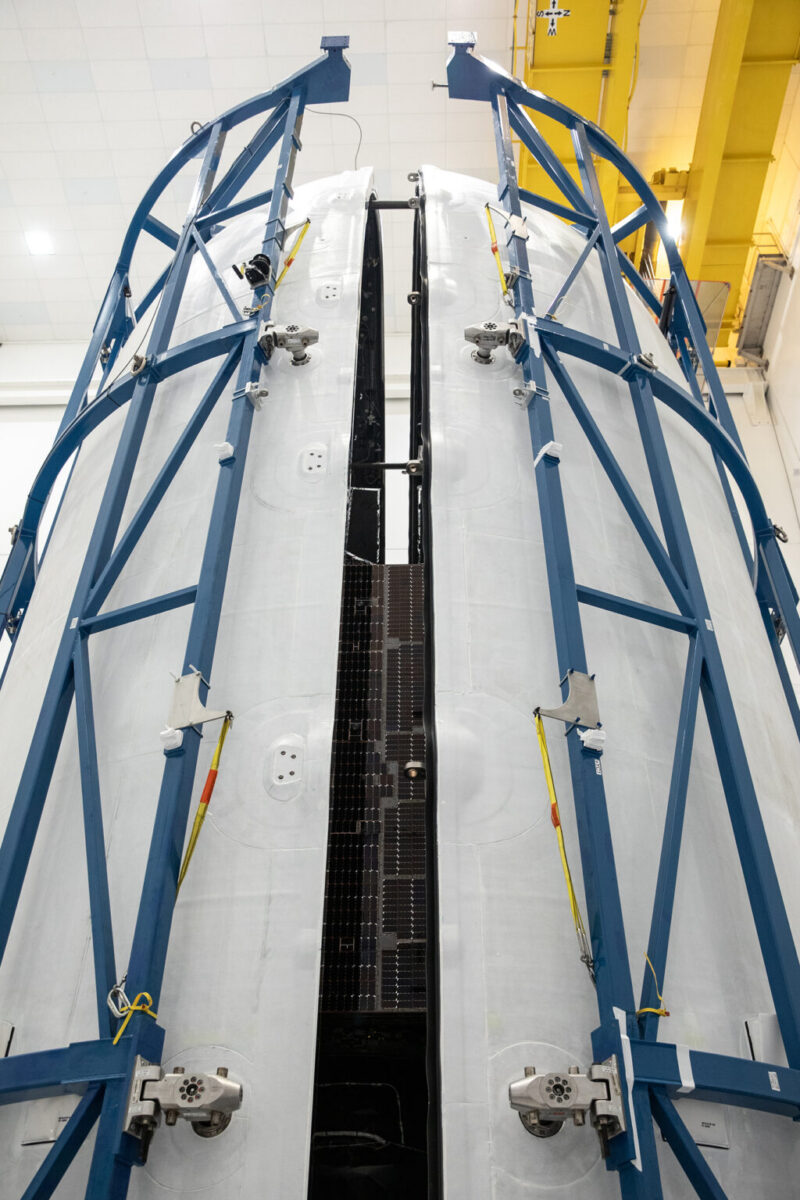
Late last week, Psyche was transferred to the SpaceX hangar at Pad 39A, where it was encapsulated inside the Falcon Heavy’s payload fairing for launch. After departing Earth early Thursday, the 5,750-pound (2,600-kilogram) spacecraft will embark on a lengthy cruise to its asteroidal namesake, whose orbit carries it as close as 234 million miles (378 million kilometers) and as far as 309 million miles (497 million kilometers) from the Sun.
Psyche will gain a gravitational push from Mars in three years’ time, with arrival at Psyche currently expected in August 2029. It will spend at least 21 months circling the asteroid, operating in a group of orbital “regimes” of steadily decreasing altitude, from “Orbit A” at 430 miles (700 kilometers) to “Orbit D” at just 53 miles (85 kilometers). These orbits will enable a range of observations of Psyche, including the identification of possible magnetic-field signatures, preliminary topographical mapping, gravity-field investigations and analysis of surface chemical constituents.




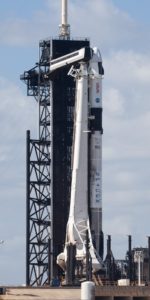

4 Comments
4 Pings & Trackbacks
Pingback:Falcon Heavy Successfully Launches NASA’s Psyche, Looks to Record-Setting Year-End - AmericaSpace
Pingback:SpaceX Flies First Mission of Weekend Triple-Header, as Starship Stands Ready to Go - SPACERFIT
Pingback:SpaceX Wraps Up Triple-Header Weekend, Flies Year’s 25th Vandenberg Mission - AmericaSpace
Pingback:SpaceX Wraps Up Triple-Header Weekend, Flies Year’s 25th Vandenberg Mission - SPACERFIT